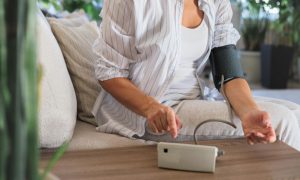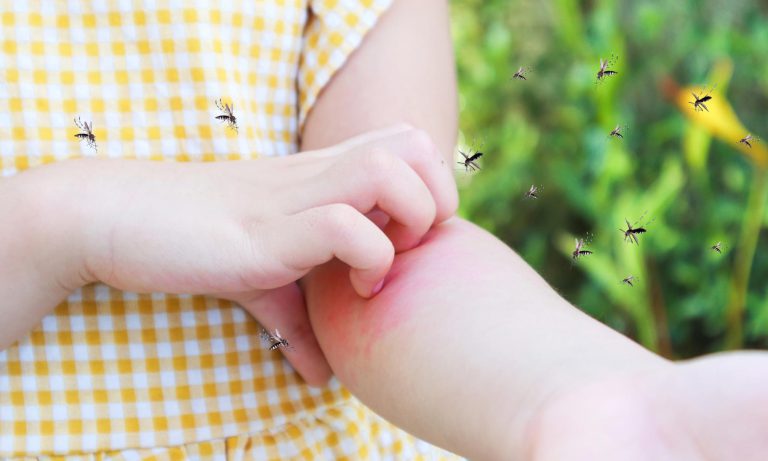Even in modern times, Filipinos still take superstitions and traditional beliefs seriously. These beliefs are often passed down in hopes of protecting one’s children from illness and misfortune. While some of them are harmless, many of these beliefs defy science and modern medicine. It is crucial to debunk these beliefs to promote health and safety, especially when it comes to children.
To be better informed and be able to raise awareness of proper medical facts, below are common health myths and misconceptions debunked.
- Misconception #1: Exposing babies to nighttime air or hamog will make them sick
This belief is passed around under the assumption that when babies are exposed to the nighttime air or hamog, they will become sick with colds. Others believe that the nighttime air contains bacteria and viruses that can infect the baby.
The Truth: Cool, nighttime air does not directly cause illness. Viruses and bacteria are often transmitted through droplets spread through the air from an infected person’s nose or mouth, either through inhaling or from touching their mouth after making contact with a contaminated surface. Due to their still-developing immune system, babies are more susceptible to viruses.
- Misconception #2: Children should be treated with kulob to sweat out a fever
First-time parents often receive this advice when dealing with their child’s fever: swaddle the child in thick blankets, close the room’s windows, and keep any electric fans or air conditioners turned off. This will cause the child to sweat, which is believed to bring the body’s temperature down.
The Truth: While the body will start sweating to regulate the body’s temperature when it rises due to a host of reasons, kulob is not an effective way to lower the child’s temperature. In fact, it contains the heat within the wrapped area. Instead, it is more advisable to place an ice pack or damp towelette on the child’s forehead and do frequent sponge baths with cold water to help the body cool down.
- Misconception #3: Placing a towel or sapin on the back to absorb sweat and avoid getting asthma or hika
This medical myth arose from the belief that once sweat dries out without a towel to absorb it, the child may contract asthma. A lot of parents still believe this to be true, which is the reason why many children are seen running around with a towel inserted into the back of their shirts up to this day.
The Truth: Asthma is a respiratory condition wherein the airways narrow and swell, while producing extra mucus. This results in difficulty in breathing, which could also trigger coughing, whistling or wheezing sounds, and shortness of breath. This could be triggered by many allergens and irritants, with drying sweat not being one of them.
- Misconception #4: Feeding sugar to children will lead to ADHD or hyperactivity
Once given a sugary treat, a child will end up in a “hyperactive” state wherein they will run around non-stop and act makulit. Following this logic, sugar should be drastically reduced in a child’s diet to prevent the development of Attention-Deficit/Hyperactivity Disorder (ADHD) or hyperactivity.
The Truth: Sugars and carbohydrates are quickly digested by the body, causing a fast spike in blood sugar. This process triggers a temporary adrenaline response known as a “sugar rush.” However, this effect is only temporary. Expert studies have not found links between sugar consumption and the onset of ADHD.
- Misconception #5: “Feed a cold, starve a fever.”
According to this old saying, children afflicted with colds should be fed more to speed up their healing. However, if a child has a fever, lessening their food intake will help them recover faster.
The Truth: For both cases, food intake is unrelated to how fast or slow recovery can happen. The human body needs fuel to function properly and heal itself. Ensuring that the sick child gets the right amount of nutrients in their meals and drinks plenty of water is more beneficial to their recuperation.
- Misconception #6: Vaccines can cause autism in children
Some parents refuse to vaccinate their children because they believe vaccines contain harmful chemicals that cause autism and other illnesses.
The Truth: The medical myth that vaccines cause autism began due to a now-discredited study linking childhood vaccines to the disorder. There is still no clear cause for autism, and many believe that vaccines are the culprit because the developmental disorder begins to manifest around the same years that children receive their immunization.
Additionally, while some vaccines can cause mild discomfort days after being administered, vaccination remains one of the most effective ways to prevent many types of diseases.
- Misconception #7: Smearing one’s first menstrual blood on the face will prevent the onset of acne
Upon having menstruation for the first time, young girls are instructed to take some of the blood and apply it all over their faces. Some Filipino moms have made their daughters follow this health myth in hopes that they go through puberty with clear skin.
The Truth: Acne can occur on the skin for several reasons: genetics, irritation from dirt and bacteria, hormonal changes, stress, diet, and even other lifestyle choices. Direct menstrual blood application on the face has not been proven to be effective against acne. Additionally, menstrual blood is made up of discarded tissue and bacteria, which could have harmful effects on the skin.
Choose Facts over Fiction for Good Health
No matter the intent, superstitions and traditional beliefs can be harmful if followed over proper medical advice. Protecting children’s health begins with consulting a doctor and following the treatments they prescribe.
Put your child’s health first and reach out to Makati Medical Center’s Pediatrics department for any medical concerns.











